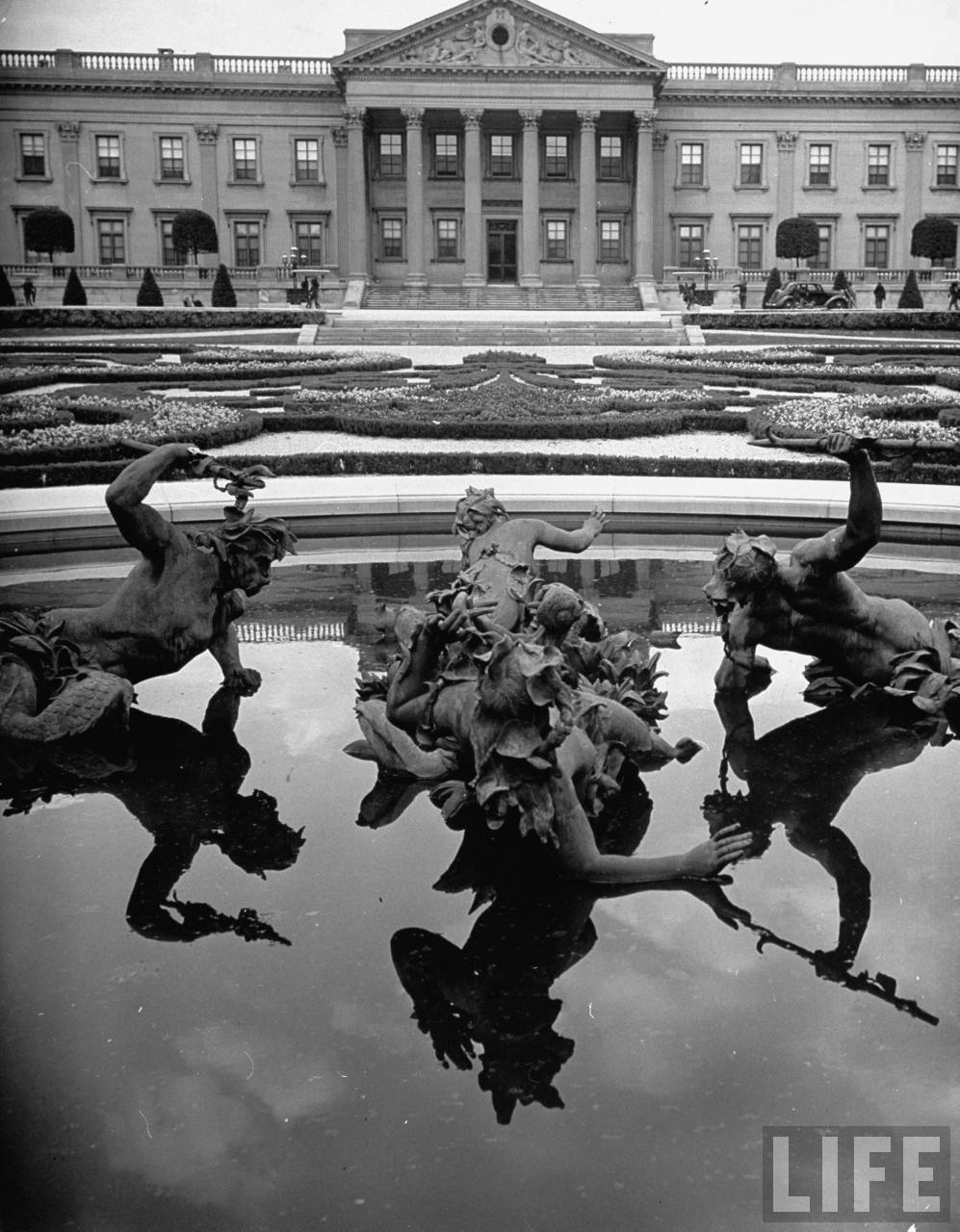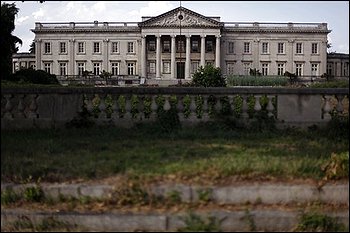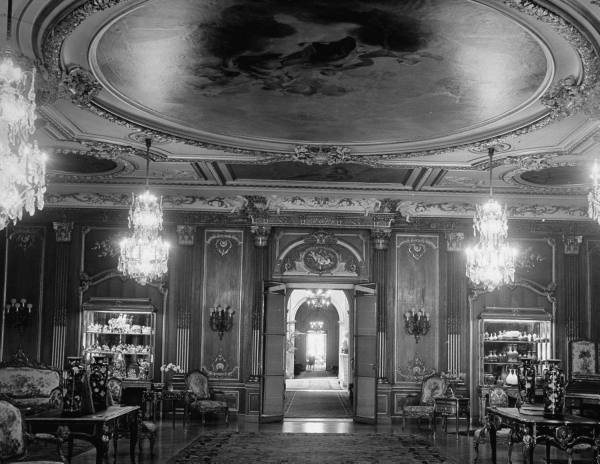
WASHINGTON POST: ELKINS PARK, Pa. — Lynnewood Hall, a century-old stunner of a building just outside Philadelphia, silently, almost invisibly, languishes 200 feet beyond a two-lane blacktop road like a crumbling little Versailles. The graceful fountain that welcomed hundreds of well-heeled visitors, President Franklin Roosevelt among them, was dismantled and sold years ago. Its once meticulously sculpted French gardens are overgrown with weeds and vines. The classical Indiana limestone facade may have lost its luster but its poise still remains – at least from the other side of rusted wrought iron gates that keep the curious at bay. Like other Gilded Age palaces of the nation’s pre-Depression industrial titans, Lynnewood Hall is a relic of a bygone era facing an uncertain future.Long before its current humble predicament, Lynnewood Hall was home to the uber-wealthy Widener family and called “the last of the American Versailles.” The lord of Lynnewood Hall, Peter A.B. Widener, started out as a butcher. After making a small fortune  supplying mutton to Union troops during the Civil War, he grew into a full-fledged tycoon from buying streetcar and railroad lines and investing in steel, tobacco and oil. MORE
supplying mutton to Union troops during the Civil War, he grew into a full-fledged tycoon from buying streetcar and railroad lines and investing in steel, tobacco and oil. MORE
WIKIPEDIA: In American history, the Gilded Age refers to the era of rapid economic and population growth in the United States during the post-Civil War and post-Reconstruction eras of the late 19th century (1865–1901). The term “Gilded Age” was coined by Mark Twain and Charles Dudley Warner in their 1873 book, The Gilded Age: A Tale of Today. The name refers to the process of gilding and is meant to ridicule ostentatious display. The Gilded Age is most famous for the creation of a modern industrial economy. During the 1870’s and 1880’s, the U.S. economy grew at the fastest rate in its history, with real wages, wealth, GDP, and capital formation all increasing rapidly. A national transportation and communication network was created, the corporation became the dominant form of business organization, and a managerial revolution transformed business operations. By the beginning of the 20th century, per capita income and industrial production in the United States led the world. The businessmen of the Second Industrial Revolution created industrial towns and cities in the Northeast with new factories, and hired an ethnically diverse industrial working class, many of them new immigrants from Europe. The super-rich industrialists and financiers such as Cornelius Vanderbilt, John D. Rockefeller, Andrew W. Mellon, Andrew Carnegie, Henry Flagler, J.P. Morgan and the prominent Astor family were attacked as “robber barons” by critics, who believed they cheated to get their money and lorded it over the common people. MORE

